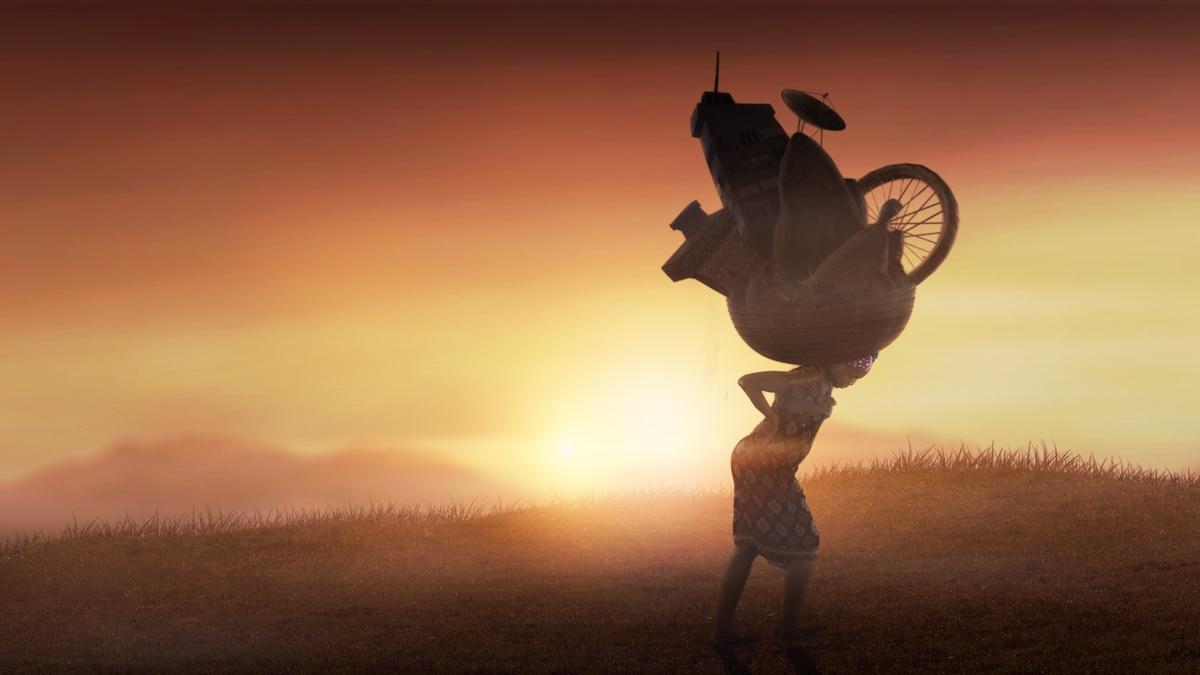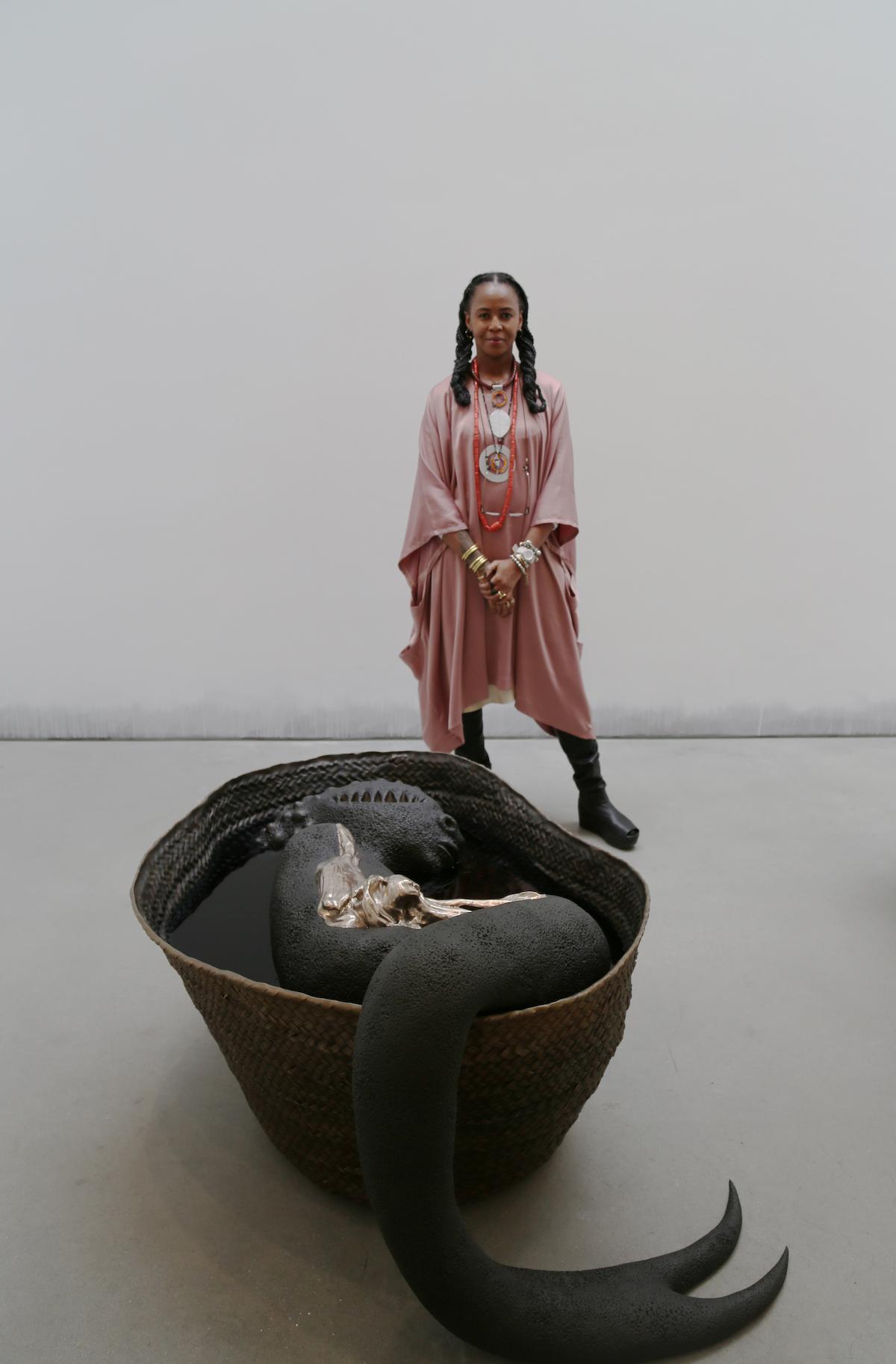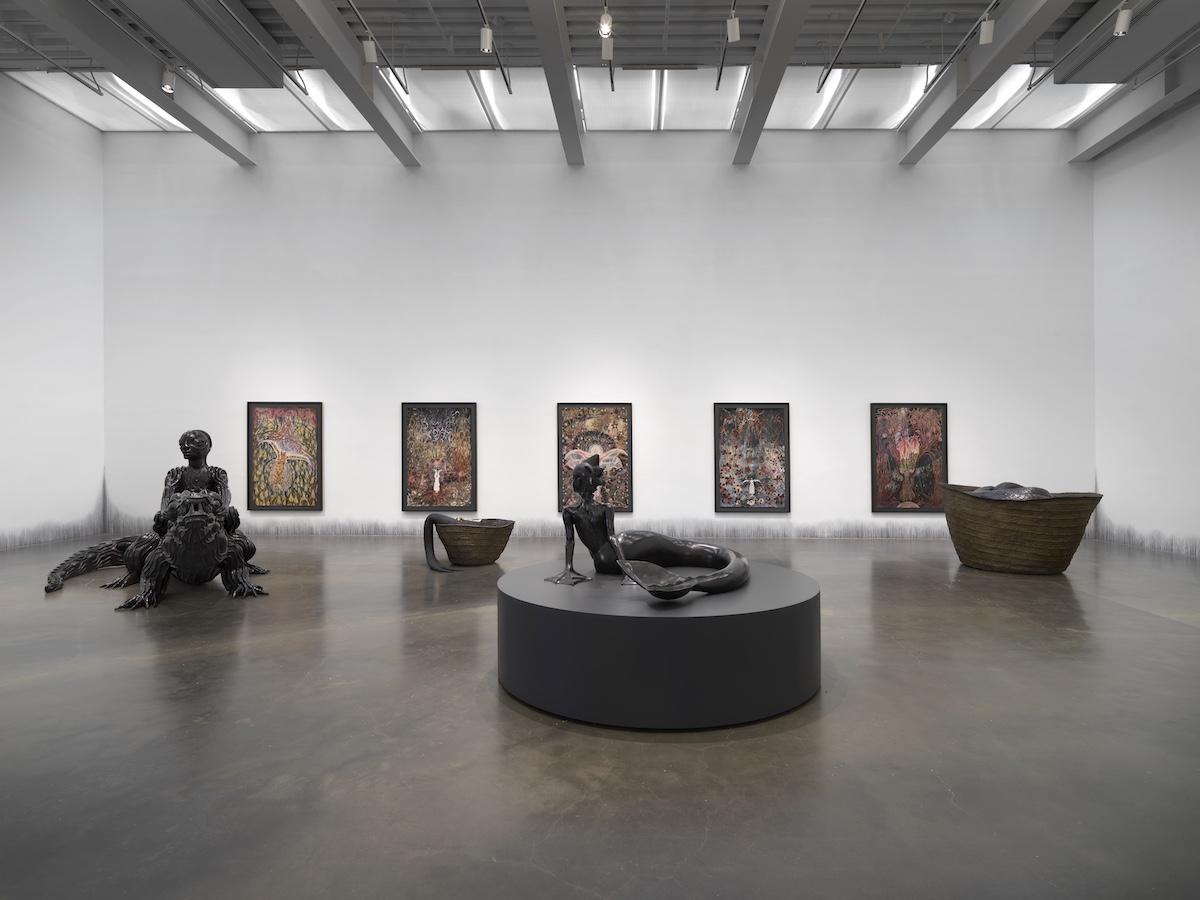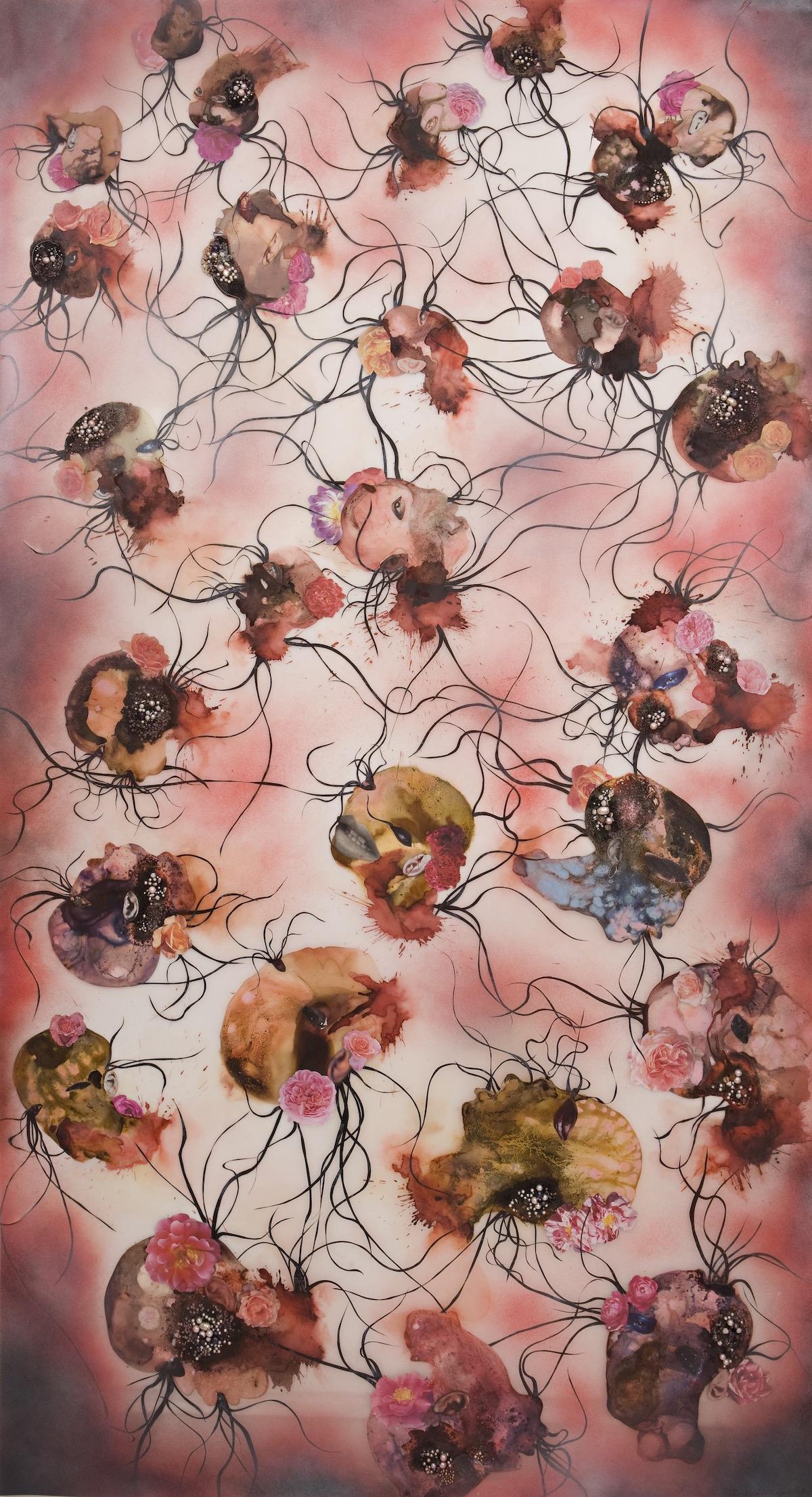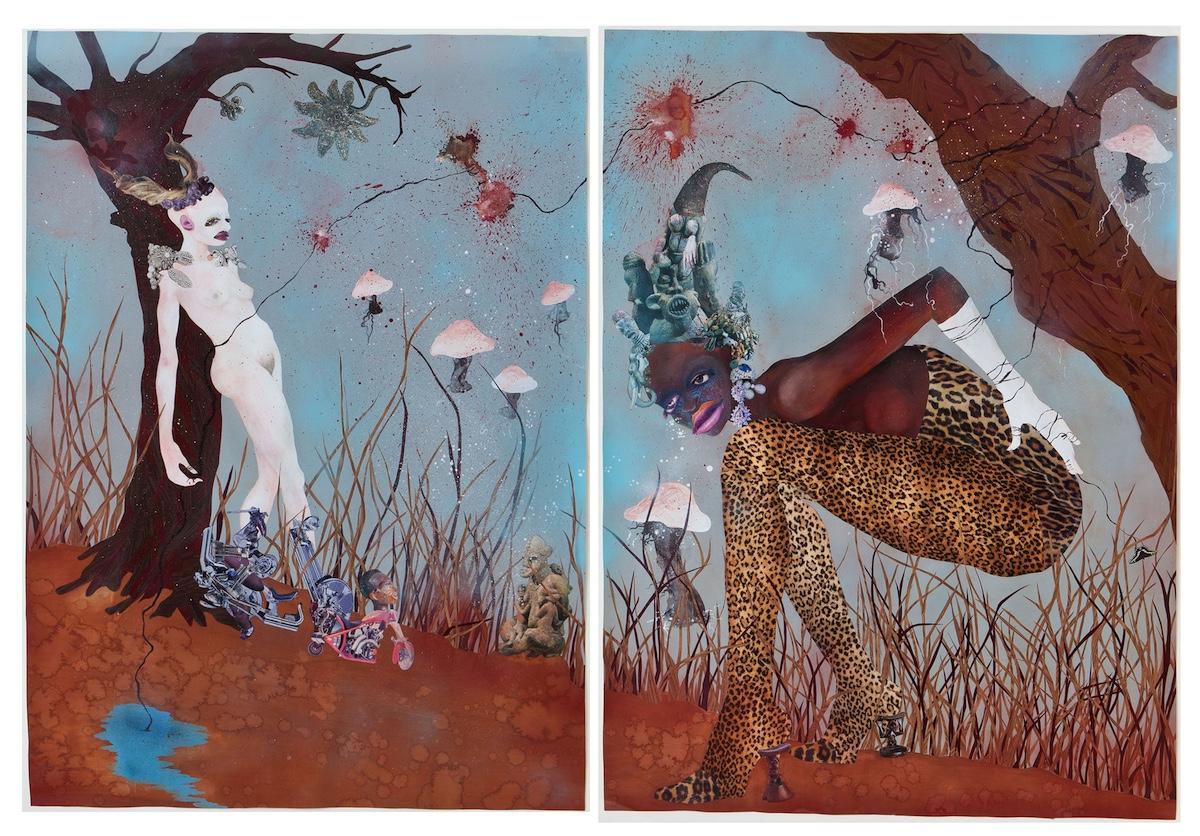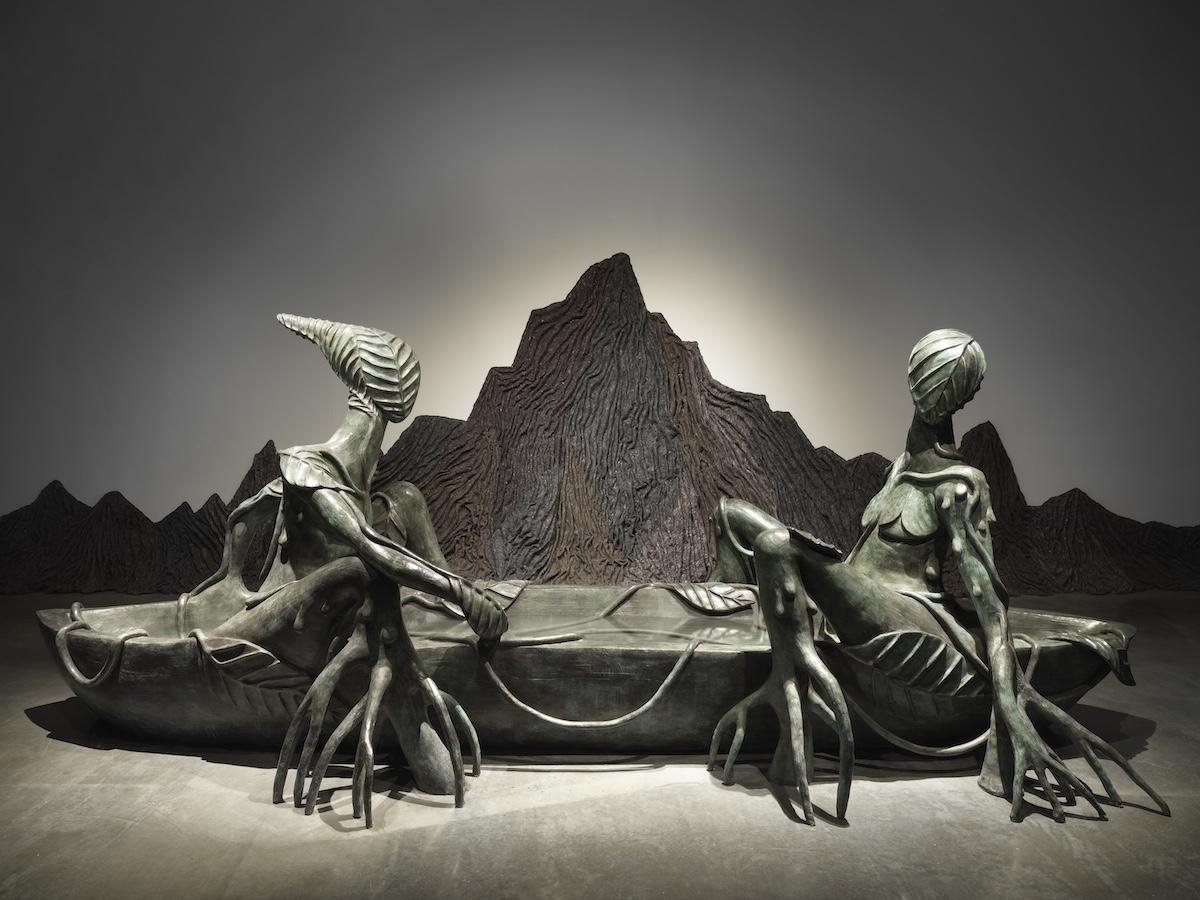“Wangechi Mutu: Intertwined” at the New Museum takes comprehensive stock of Mutu’s thirty-year career and occupies the entire building with over a hundred works spanning painting, collage, drawing, sculpture, and film. The show’s title is apt since in both her 2D and 3D work, Mutu’s forms are often characterized by sinuous, serpentine contours, and in fact, snakes feature prominently as subjects (as in 2022’s Nyoka, a larger-than-life bronze of an anaconda coiled in a basket).
Mutu, 50, was born in Kenya and currently divides her time between New York, where she first gained notice in the early 2000s in Nairobi. Her education included a stint at The New School for Social Research, where she studied anthropology and art. Like many a current star, she also earned an MFA from Yale, whose graduate program is the de facto academy for contemporary art. She is, in other words, the very model of a significant multicultural artist, though one set apart by the sheer weirdness of her work—which, to be fair, possesses its own kind of phantasmagoric beauty.




